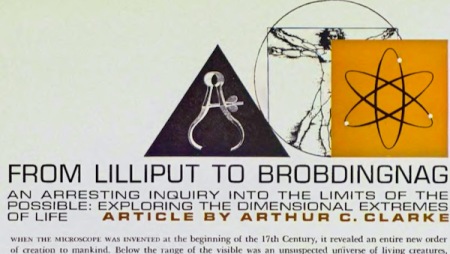
The valiant attempt by George Newnes to bring colour to the masses, ‘the million’ as they were described in the early 1890s, was the subject of a paper I gave in Liverpool a couple of weeks ago.
The Million, an ambitious penny weekly, is rarely discussed*, but was a rare failure for the man who pretty much invented the modern magazine industry – and became one of the richest men in the country in the process. Magazine publishers such as Cassell and Hodder & Stoughton would soon become, in today’s parlance, legacy brands, and were left to concentrate on book publishing.
But Britain was slow to adopt colour printing. Although the Illustrated London News had started at trend for colour supplements at Christmas in 1855, colour was still reserved for special occasions and papers for children. There were colour weeklies in France and the US, however.
Newnes had launched Tit-Bits, the best-selling weekly, in 1881, and The Strand, the best-selling monthly thanks to Sherlock Holmes, ten years later. The Million started as a tabloid-size magazine in 1892 and lasted for about three years, though it halved its page size during that time and had two redesigns (usually a sign of problems). Its readers were called, of course, ‘Millionaires’ – Newnes was nothing if not aspirational for his audience.

Coloured photograph of a lifeboat coxswain in The Million, 1894
The size, quality and number of colour engravings falls sharply in the final year, though there are some surprises; a coloured photograph of a lifeboat coxswain in September 1894 is particularly striking.
The Million was printed on letterpress machines – so did not have to use expensive paper – by the London Colour Printing Company at their works in Exmoor St, Notting Hill. The same printer later produced Puck, a colour cartoon paper launched by Harmsworth in 1904 and seemingly modelled on a US paper with the same format and title. Harmsworth’s Amalgamated had also tried colour for a one-off edition of a comic paper called The Funny Wonder in 1898 (May 28).
In fact, Guy Lawley, a fellow researcher at the conference, told me that the colour presses used by Newnes were bought from Hippolyte Auguste Marinoni, who already used letterpress for a supplement to his French daily tabloid Le Petit Journal. This was the best-selling paper in France – probably the world – claiming a million print run in the early 1890s.
Le Petit Journal appears to have started publishing an eight-page colour illustrated supplement on Fridays in November 1890, judging by adverts on the front page of online digitised copies of the daily edition at the French national library. The price was 5 centimes, the same as the daily edition. Soon after, the supplement itself was claiming print runs of just over a million.
Guy adds that the success of Le Petit Journal and The Million inspired US newspaper publishers to turn to colour. The Chicago Inter Ocean added a free Sunday colour supplement in 1892, three months after The Million; The New York World added colour pages from 1893 and later a colour section. The Inter Ocean referred to the success of both Le Petit Journal‘s Supplément Illustré and the Million in its editorial announcing the coming of colour.
The New York supplements evolved into colour Sunday comics section, a development that was then copied across the country, giving birth to a new form of mass entertainment in the US.
As for the US Puck, that was printed using a different printing technology, lithography, until it was taken over by William Randolph Hearst in 1917, and closed down. However, in 1918, he resurrected the name Puck on his own Sunday comics supplement for the New York Journal, so it was also printed on newspaper-type colour letterpress presses.
Guy is working on a PhD thesis about colour printing and US newspaper comics.
Print Networks and the Centre for Printing History & Culture organised the conference, Dregs, dross and debris: the art of transient print. Discussions are under way about collating the talks as proceedings, or publishing them in Publishing History or Printing History and Culture.
*Kate Jackson’s Newnes and the new journalism in Britain, 1880-1910 has the most to say about it; Dave Reed doesn’t mention it. My British Magazine Design shows one of the smaller format covers. The issues are available in the British Library as bound volumes
General weekly magazines
The Strand magazine
 To see almost 500 magazine covers and pages, look out for my book, A History of British Magazine Design, from the Victoria & Albert Museum, the world’s leading museum of art and design
To see almost 500 magazine covers and pages, look out for my book, A History of British Magazine Design, from the Victoria & Albert Museum, the world’s leading museum of art and design











 It turns out though, that not only was the illustration jumping on the Beatrix Potter bandwagon, but that it was a copy – or a licensed reproduction of – a cover by Frank Guild from the Ladies’ Home Journal, a US monthly, from Easter the year before.
It turns out though, that not only was the illustration jumping on the Beatrix Potter bandwagon, but that it was a copy – or a licensed reproduction of – a cover by Frank Guild from the Ladies’ Home Journal, a US monthly, from Easter the year before.








 To see almost 500 magazine covers and pages, look out for my book,
To see almost 500 magazine covers and pages, look out for my book, 






































































































